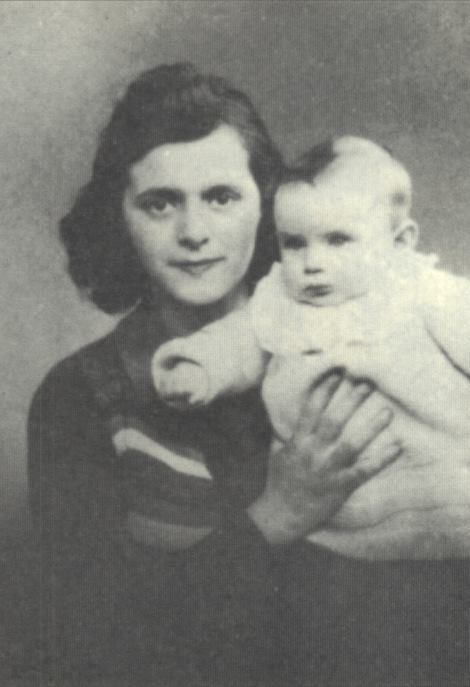|
|
 |
Michèle ICHBIAH was only one and
a half years old. She was born on May 16, 1942, in Paris, where she lived at
102 rue Petion (11th arr.). She was deported with her parents,
Léon, age 26, and Victoria, 25, on convoy 67 of February 3, 1944. Léon survived and wrote
the following description of their arrival in Auschwitz.
At nine o'clock
on February 6th, in other words, four days after our departure, the train pulls
into the freight station at Auschwitz. Shouts wake us from our torpor. Despite
our great fatigue, we are very nervous. After a short moment's wait, the doors
open, and the blinding light that invades the car reveals a landscape of snow.
It is very cold. In the distance we hear the crack of a machine gun. Each of us
can read on the face of the next the toll of our journey. But we must not
linger: we are ordered to leave our suitcases and food in the cars. S.S. men
board the train and force us off, shouting and beating the laggards with their
clubs, men and women alike. |
|
 |
|
| |
| Terrified people jostle one another and rush
outside.Many, among them old women, fall to the ground, felled by exhaustion or
by blows. They are brought to their feet by repeated kicks. The sight of this
first spectacle terrifies us, all our illusions fly away on the spot, and we
are afraid. But what is most striking is the sight of some hundred convicts in
striped pajamas, each with a number and a capital letter to indicate his
nationality. Living skeletons with shaved heads, they are a pitiful lot, and
drag themselves along with the greatest difficulty, ceaselessly beaten by
another prisoner armed with a bullwhip, fat, well nourished and dressed like
them, but with a yellow armband on which we can read the word CAPO. It is a
special team that is sent to clean the cars after each arrival so they can be
reused; among their tasks is to stack all the luggage on the track. As soon as
we are on the ground, we are sorted by category: young, old, women with
children and without children, able-bodied men, able-bodied women.... The old
and the sick, and women and children, are led to trucks that carry them away.
At this point I must say that I owe my life to the comrade, now dead, who
unsealed the door to our car. It is he who, with a wink (for he was not allowed
to speak), motioned me to join a column that-he knew-would be taken into the
camp. The rest-a group of 300 deportees-is arranged, not without kicks, into
groups of five, and stripped of all their packages and bags, which we stack on
the ground, in the snow. It is very cold. Already the last truck disappears,
taking away the last load. I wave to Victoria, who is holding Michele in her
arms. I never see them again... . |
|
|
|
| |
| |
| |
FRENCH
CHILDREN OF THE HOLOCAUST A memorial
Serge Klarsfeld
 |
Back |
Page 1493 |
Forward |
 |
|
 |
|
|
| |
|
Last modified: March 9, 2008
Technical/administrative contact: webmaster@holocaust-history.org
|
|

